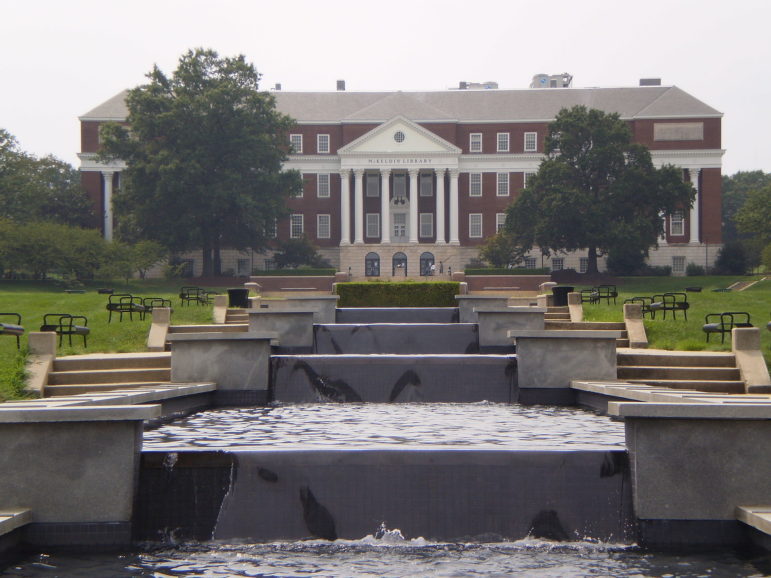
August 8, 2016, Forbes
But too many super-wealthy colleges are playgrounds for the children of the wealthiest in our country and the world. And the leaders at too many of these institutions have mostly chosen not to prioritize educating students from low-income families.
That is a quote from “A Glimpse Inside the Coffers: Endowment Spending at Wealthy Colleges and Universities,” a new report that is decidedly not peer reviewed by the academy. The authors are Andrew Howard Nichols, Ph.D., director of higher education research and data analytics, and José Luis Santos, Ph.D., vice president of higher education policy and practice, at The Education Trust, a national nonprofit advocacy organization that describes itself as “Fierce advocates for the high academic achievement of all students—particularly those of color or living in poverty.”
Stories contain one kind of truth; numbers another. NPQ readers are rich in stories about the young people they see every day who know the truth about their chances at economic mobility without having to see the data.
The numbers in this report show that the 138 institutions that have over $500 million in endowment assets (“The Club”) with a per-student value above $137,000 (compared to the 1,525 four-year, public and private nonprofit institutions with a per-student endowment value of approximately $9,600) are holding on to the money. The researchers scrutinized 67 of the largest endowments with great care and found that these institutions are not being compliant with the intent of the law that permits these taxpayer-subsidized endowments to exist.
In writing for Forbes, Preston Cooper adds, “On top of all that, various federal student aid programs and tax preferences for tuition enable schools to charge their students more. Our top colleges receive a plethora of government subsidies that would make even the much-favored ethanol industry blush.”
NPQ has reported about isolated programs such as Harvard College Connection, where tuition and expenses for academically qualified students from low- and moderate-income families are capped at a percentage of the family’s adjusted gross income.
Colleges and universities are not required by law (for now) to spend at least five percent of their endowments on mission-related expenses like other nonprofits. The resentment is building and they are in the crosshairs on Capitol Hill. Senator Orrin Hatch, chairman of the Senate Finance Committee, and Representative Kevin Brady, chairman of the House Ways and Means Committee, asked a good number of pushy questions in this letter to 56 private colleges with endowments larger than $1 billion. Others in Congress are wondering out loud about what the benefit to society would be if returns from private college endowments were taxed at 35 percent.
Sign up for our free newsletters
Subscribe to NPQ's newsletters to have our top stories delivered directly to your inbox.
By signing up, you agree to our privacy policy and terms of use, and to receive messages from NPQ and our partners.
There’s something predatory in these otherwise undisclosed numbers. As income inequality continues to accelerate, an index of the state of groveling on the part of the majority of America’s young people and their families could be established. There is both grief and mortal comedy hidden in these numbers.
The America of many decades ago enacted child-labor laws, established food safety standards, and regulated business activity to correct the downside of “social Darwinism.” Will these numbers inspire a similar moral shift? Not likely. Cooper offers this chilling insight into just how tightly the money is held—and taken whenever and however it can be gotten.
The U.S. government allows students access to tens of thousands of dollars apiece in the form of Pell Grants and direct student loans. These grants and loans enable colleges to either raise tuition or cut back on institutional aid in order to “capture” the funds Uncle Sam makes available. When students can pay more, colleges charge more. A number of recent economic studies (four links there) have found evidence for this phenomenon, known as the Bennett Hypothesis. What’s more, the worst offenders appear to be highly selective nonprofit colleges—the very same institutions Nichols and Santos identified with ten-figure endowments and Scrooge-esque financial managers. For example, Lesley Turner of the University of Maryland found that selective nonprofits capture, through tuition increases and financial aid reductions, 79 cents of every dollar of additional Pell Grant aid they receive.
The elite college and university administrators have a host of arguments at the ready to justify not spending more of their money on financial aid. There is donor intent to honor. Endowments are investments representing many hundreds and even thousands of accounts, each with their own restrictions. And then there is the most common argument: preserving the institution’s wealth for the future.
The report’s authors have little sympathy for such excuses. “They are not powerless, passive actors when it comes to fundraising, receiving financial gifts, and determining how endowment funds are spent.”
Cooper offers another reason why elite colleges have little incentive to spend more of the endowment earnings—there is too much money to be had elsewhere, such as from the problematic Parent PLUS loans.
Students who exhaust their standard loans can get a parent to cosign a federal PLUS loan and gain access to an unlimited line of credit. According to the most recent data, the average PLUS borrower took out nearly $14,000 per year. Half of all PLUS disbursements went to just 178 schools, mainly selective private nonprofit and public universities.
Income inequality equals shrinking opportunity. When our country, let alone our elite colleges and universities, diminish equality of opportunity we have no way to calculate the opportunity cost. It would appear that some of our most advanced institutions of learning are not even interested in knowing that cost.—James Schaffer













